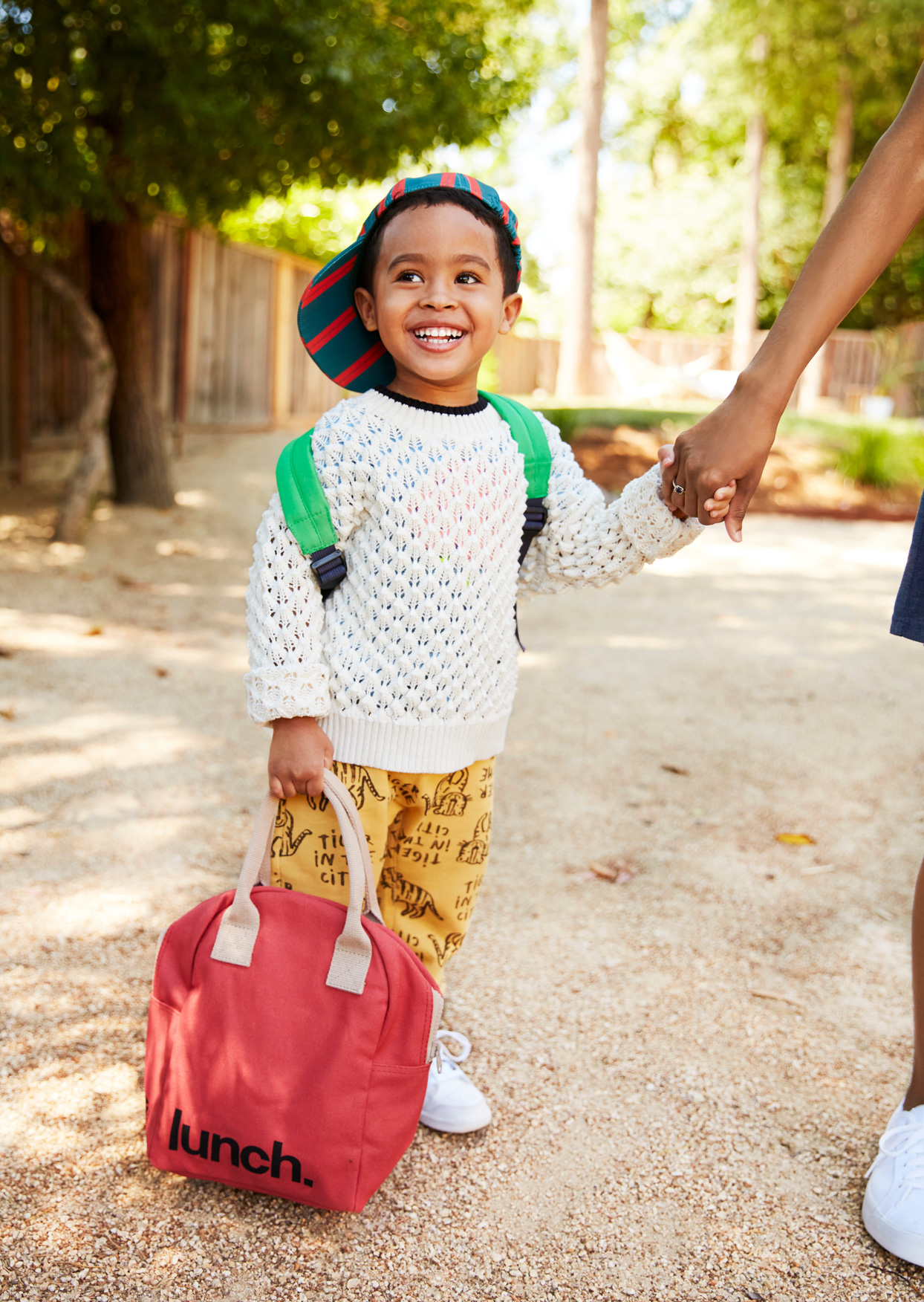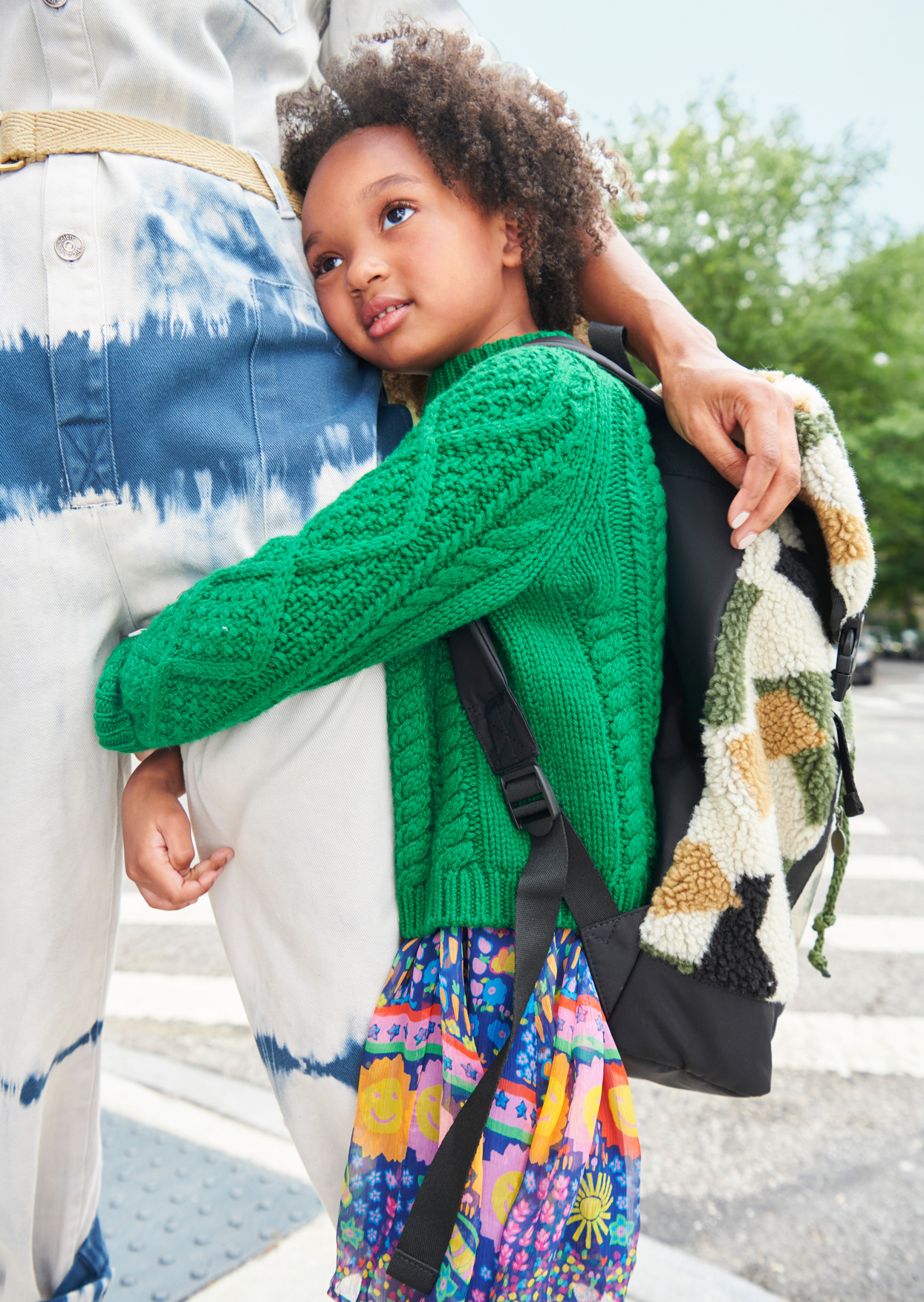
It's an exciting time for parents, but a potentially daunting one for kids, who are about to use muscles not flexed in months. Like the ones for socializing, having fun without screens, or feeling secure without parents. Our 2021 Back-to-School Survey found that 27 percent of parents are concerned about how their child's mental health will fare.
All change—positive or otherwise—can be disruptive, says Parents advisor Timothy L. Verduin, Ph.D., clinical assistant professor of child and adolescent psychiatry at NYU Grossman School of Medicine. "Kids have been in pajamas all day, waking up later," he says. "Letting go of that can be hard."
Assessing how your child feels is key. "Keep the talk brief and open-ended," advises Rachel Busman, Psy.D., former senior director of the Anxiety Disorders Center at the Child Mind Institute, in New York City. "You might say, 'What's on your mind when you think of school?' " With preparation, returning to routines likely won't be a problem. "Some things will be easy and some may be difficult," Dr. Busman says. "But after an initial adjustment period, kids will settle back in."
The Challenge: Returning to a Healthy Sleep Routine
Experts agree that an effective strategy is to gradually move bedtime earlier in increments so the new schedule doesn't feel like such a radical change. Two weeks before school (if time permits), move "lights out" back by a half hour each week, and don't make the plan up for discussion. "Be firm and clear: 'I know you've enjoyed staying up late, and you can a little on the weekends. Starting Monday, bedtime will be at such and such time,'" Dr. Busman says. A fun pre-bedtime activity—like reading, singing lullabies, or playing music—can make turning in more alluring, even something to look forward to. If there are multiple kids in the household, try to make bedtime a one-on-one experience, she suggests. "Kids crave time when they feel like the center of the universe, so make it a special thing between you—or whoever has the bedtime shift—and them."

The Challenge: Being Apart From Parents
With so many parents working from home, September may mark kids' first considerable solo stint, which can be scary and jarring—at first, anyway. "I think it may be an initial concern but not an enduring one," Dr. Verduin says. "Once they're at school with other kids, an environment that's set up to receive, stimulate, and engage them, I think they will adjust within weeks." First and foremost, Parents advisor Laura S. Olivos, Psy.D., a psychologist at the Olive Tree Center for Child and Family Psychology, in Miami Beach, asks parents to look within. "How are you regulating your own anxiety about fall? What are you modeling to your child?" she says. To show kids how you get through stress, you might say, "Hold on, I'm having big feelings, so I'm going to do a belly breath." Or "Mommy's going to take a break, and I'll be able to answer that in a second."
Dr. Olivos suggests a three-pronged approach for addressing separation anxiety in your child. Start by creating predictable, structured routines to balance the nervous system. A visual schedule, where a child sees a colorful sequence of activities and tasks for the day, can be a helpful tool. Then give children some choices in their routine so they can feel some control, pacify anxiety, and be more autonomous. "The third thing I would do is normalize worries and offer tools they can use to cope," Dr. Olivos says. These could include mindfulness exercises or deep breathing. Another idea: rehearsal. That could mean anything from visiting school before it opens for a walkthrough, doing a mock drop-off (literally—you'll have them say goodbye, walk to the door, and return to the car), going on date night and leaving them with a sitter, or organizing a sleepover at a friend's house. Don't make a big to-do in your goodbyes, but reassure your child you will be back. Once you're back together, praise their bravery.
The Challenge: Using the Bathroom at School
Though it's a problem that often goes undiscussed for obvious reasons, many kids find it challenging to go to the bathroom outside the home, either refusing to go number two or not voiding at all. The result? Anything from accidents to a urinary tract infection to a just plain miserable kid who's holding it for hours. The reason for this difficulty is hardwired: "Pooping is a state of vulnerability," Dr. Olivos says. "When we were cavemen, a lion could eat us if we were pooping." Though being chased by predators isn't the issue today, being made fun of by classmates can be, as can the common fear of a toilet's loud flush (or a kid's deep-seated psychological worry that the toilet could swallow a part of them). Elementary school facilities may be located within the classroom, and kids may feel heightened embarrassment about the social stigma of using the bathroom after a year of going at home.
If your child expresses anxiety about going at school, let their teacher know and ask what the bathroom situation will be this year. (Some may have converted multiple stalls into a single-use facility, for example, or may have restrictions in place about how many kids can go at once.) To ease your child's fears, start with an exploratory prompt, like, "I wonder why it feels difficult to go potty at school?" Then walk your child through the plan ("First you'll go down the hall, and next you'll make sure the seat is down before sitting …").
If they have concerns about hygiene amid COVID-19, equip them with wipes or hand sanitizer. Practicing using other public restrooms can also go a long way. And make sure your child realizes they have some semblance of control about how to go through this process: "Did you know that if you need to go potty at school, you can ask your teacher for help? Maybe you can bring a book if you need to relax." (Of course, you'll want to check with your child's teacher to make sure this is okay.) Finally, give them tools to cope. "Encourage them to breathe through their anxiety," Dr. Olivos says. "And tell them you're proud of them for working through this."
The Challenge: Reestablishing Screen Limits
Excessive screen time became its own epidemic during lockdown—87 percent of the parents we surveyed said their kids' screen time had increased, and 95 percent expressed concern about the uptick. Parents should be aware that kids generally don't have the ability to regulate this habit. "Screen time affects dopamine in the brain, and some games are engineered to get you to use them more," Dr. Verduin says.
Every child is different when it comes to how much screen time is too much. (Check out the media calculator at healthychildren.org for an estimate.) You can try to regulate devices by allowing usage for a certain number of minutes a day or during a specific time period, but replacement therapy may be a more effective solution. Consider the times when your child gravitates toward screens and what function they serve. "If they're going to screens to connect with friends, can you set up some safe playdates instead? Or can they do a FaceTime in place of a video game?" Dr. Verduin says. Another tactic is to create an incentive system: If you accomplish a specific task, you get X amount of screen time, Dr. Olivos says. "You want to make sure you're being predictable in how they can earn that access instead of sporadic. The more inconsistent you are with rules, the more inconsistency they're going to display back to you in their behaviors."
Frame things in a way that doesn't blame your child: "It's hard for us to control ourselves around technology, just like with junk food. I love donuts. You love Cheetos. We aren't getting rid of them. We're just deciding when it's a good time to have them, like on a Saturday or with friends." Some children will resist the new plan. "They'll lie about it, negotiate, beg, and fight," Dr. Verduin says. "If you're seeing that behavior, it's a warning sign that use is unhealthy and excessive, and you're doing the right thing in cutting it back."
The Challenge: Socializing After So Much Isolation
While some kids will be excited to see their buddies on a regular basis, others may be apprehensive. Validate their feelings by saying it's okay if they're not sure how to get back to playing like they used to. Role-playing activities like playdates, greeting a friend, or taking turns can help get kids back into the swing of things, Dr. Olivos says. "Kids learn a lot through hands-on approaches, visualization, and having choices in what they can do." Practice making introductions, which can be as simple as "Hi, I'm [name]" or "Hey, want to play with me?" Kids starting at a new school may worry about not knowing anyone in their class. In this case, Dr. Busman suggests getting a list of kids in the grade or asking your child's new teacher for a class representative contact. "Reach out and see if you can arrange a playdate or a breakfast or lunch in the park."
Keep in mind that this time has been enlightening for us all, and your child may have come to realize that they enjoy being on their own. Don't worry too much if your child asks for more time to read or write stories or just be. "Like adults, some kids thrive on 'alone time,' and that's healthy. It's when they choose to be alone because they're too afraid to interact with others that you should intervene," Dr. Olivos says. That may mean talking to the teacher about involving them in group activities in class or seeing a psychologist.
This article originally appeared in Parents magazine's September 2021 issue as "Ease Their Worries." Want more from the magazine? Sign up for a monthly print subscription here
Parents magazine


